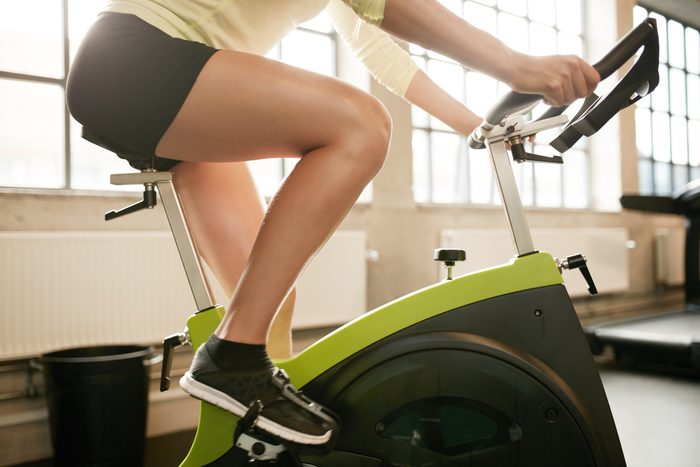
Indoor cycling knee pain
Quarantine has led to a boom in the indoor cycling industry as people are staying home and socially distancing. Compared to the first quarter of 2019, stationary bike sales have increased by 31 percent.
“I love the trend towards biking, indoors and out,” says Jordan Metzl, MD, a sports medicine physician at the Hospital for Special Surgery in New York City.
While biking has many benefits, jumping onto an exercise bike daily when you’re not used to it can have some negative results—the most common being knee pain. If you’re riding more inside, you might have knee pain simply because your patella, or knee cap, isn’t used to the loading forces from biking which is different from running or almost any other activity, explains Dr. Metzl.
“Like with other sports, it takes a while to build up the proper muscle strength, and technique, to make biking pain free,” he says. “With an indoor bike right next to the work-from-home station, it’s easy to just jump on and just go, too. If your body is untrained, or not used to the loading force, it can cause pain.”
Improper ergonomic setup of the bike could be a reason for knee pain, too. “Just like proper desk setup is important in the office or at home, setting up your bike and making sure it’s a good fit will prevent aches and pains in the body, particularly in the knees,” says Jaclyn Fulop, a physical therapist at Exchange Physical Therapy Group in Jersey City, New Jersey. Don’t miss the benefits of owning your own cycling shoes to save yourself a trip to the doctor.
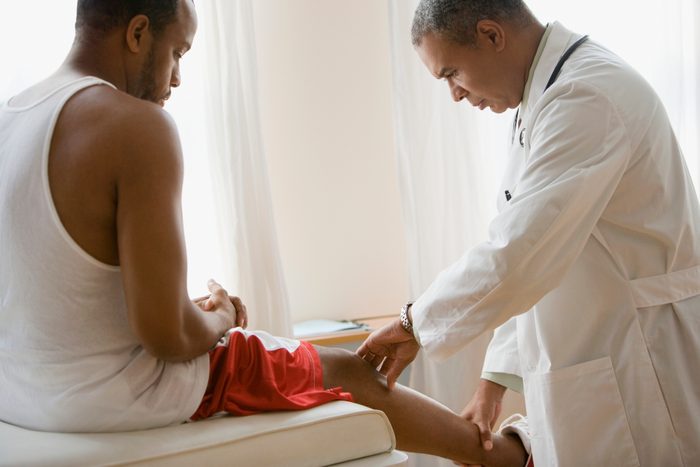
When to see a doctor
If your knee pain is extremely persistent, or gets worse as the days go on, you may need to get a medical professional’s opinion.
“If you hear an audible ‘pop,’ visibly notice swelling or increased redness in the knee, quad, or calf, feel sharp pain in the back calf, or have overall weakness and instability, these signs are a good indicator to go to your doctor to rule out anything that could particularly be more serious,” says Fulop. (This is what behind-the-knee pain could mean.)
Otherwise, you may be able to treat your knee pain on your own. Try any of these medical professional-approved suggestions and tips to help ease knee pain from indoor cycling.

Let your body rest
Pain can be your body’s way of telling you that you might be overdoing it, so rest may be the best medicine.
“If you’re doing the same sport every day in a row, it can cause pain,” says Dr. Metzl. “I’d recommend biking every other or every third day and then adding in some other fun activities.” Try going for a long walk, playing a sport, or even going for a swim.
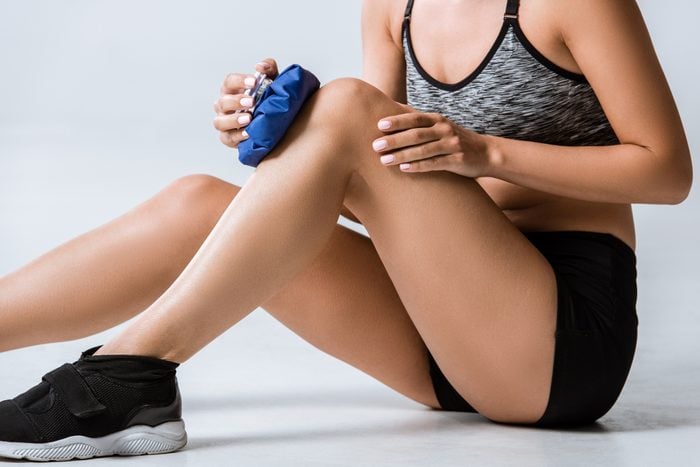
Apply ice to reduce inflammation
If you’re feeling pain, especially for a couple days or weeks in a row, chances are good that some inflammation has built up in your knee.
“Ice is nature’s anti-inflammatory,” says Dr. Metzl. “Fifteen minutes of ice after exercise can do a painful knee a world of good, both from the anesthesia of cold, and the reduction in the cytokines that cause tissue irritation.” Check out these spin shoes for indoor cycling that can help reduce your risk of injury.
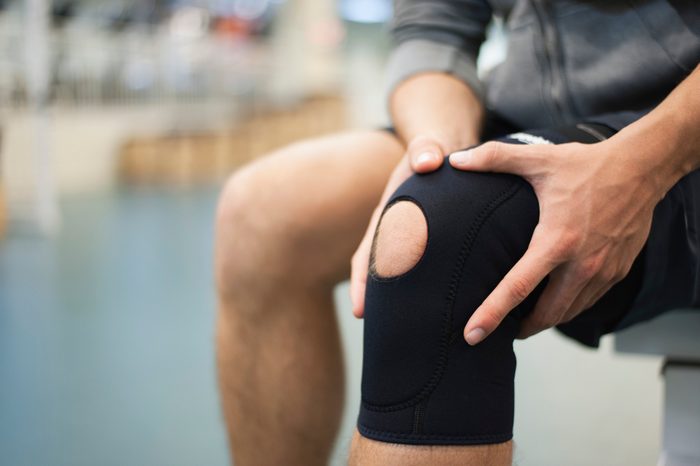
Apply a compress
Applying compression to your knee will not only add a little bit of support, but it will also help to decrease swelling. “Here I’d say to apply gentle compression,” explains Dr. Metzl. “You don’t want your foot to turn blue!”
Try using a knee sleeve, or wrapping an Ace bandage around your knee. You can wear it before, after, and even during your cycling session. Try the ACE 3″ Elastic Bandage with Hook Closure ($11) for maximum support and compression. Don’t miss these exercise bike products that will also keep you healthy.
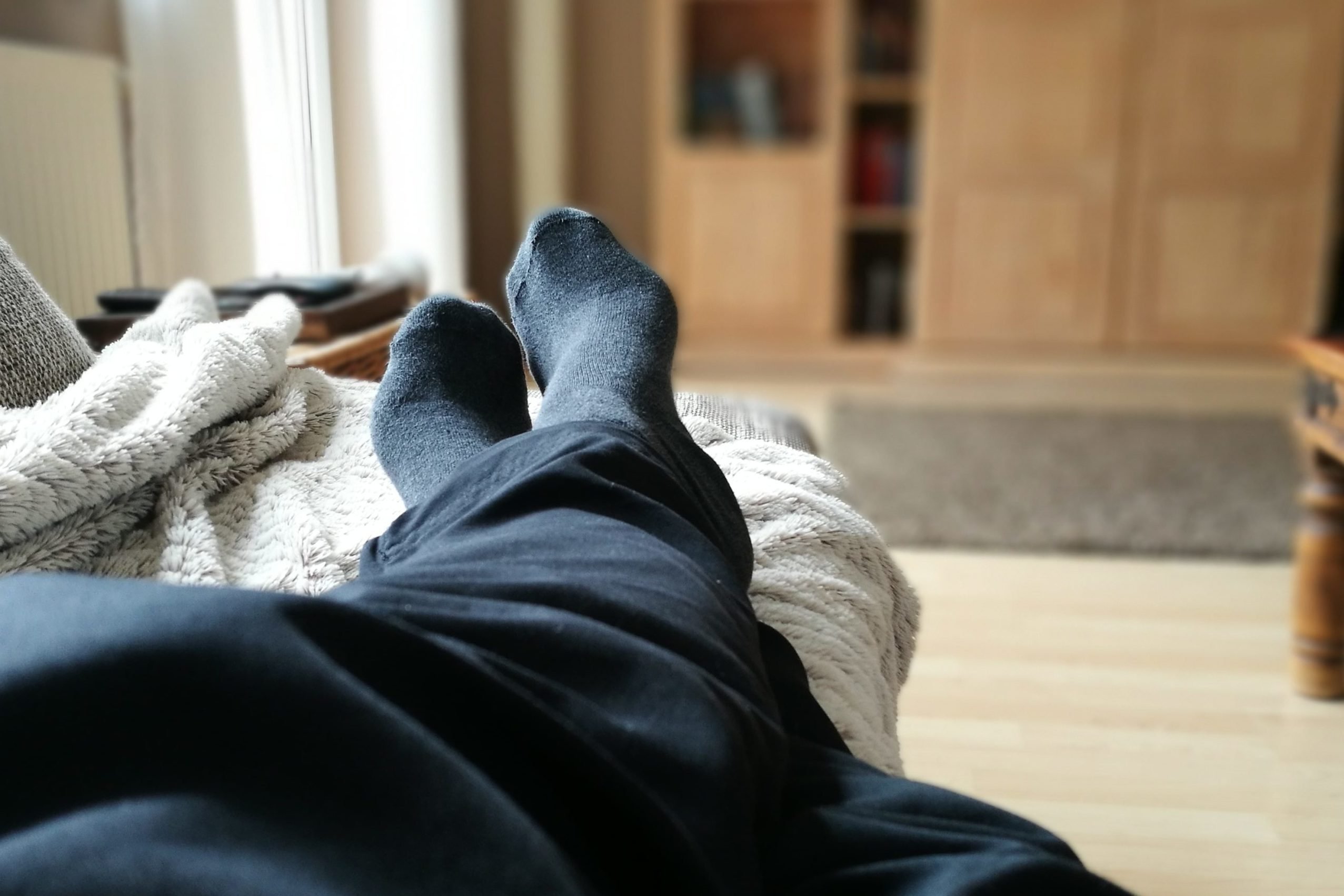
Elevate your knee
Whenever you’re sitting or lying down, try your best to elevate the knee. This goes for when you’re sleeping as well. Keeping it at or above heart level can help decrease swelling.
Try doing all these things combined—rest, ice, compress, and elevate, also known as the RICE method, says Dr. Metzl. “These four treatments in unison seem to yield the best result.” (Here are some proven remedies for fast pain relief.)
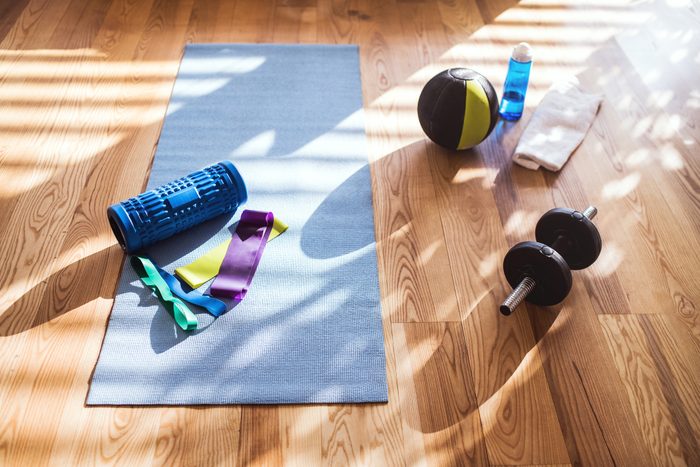
Use a foam roller
Foam rolling is a good way to help ease discomfort at the knee. Traditional foam rollers utilize pressure from body weight as an energy source to relax muscles. The size and shape of the roller plays a great part in the amount of pressure being applied, explains Fulop.
“If the pressure is too much, to the point where your body cannot relax and remains tense in discomfort, it actually defeats the purpose,” she says. “The sweet spot is in the middle, between comfort and good, sustained pressure.
Fulop recommends foam rolling two times a day to the glutes, hips, and iliotibial band (IT), which is a large tendon that runs along the outside of the leg from the hip. Here are some other IT band stretches you can try.
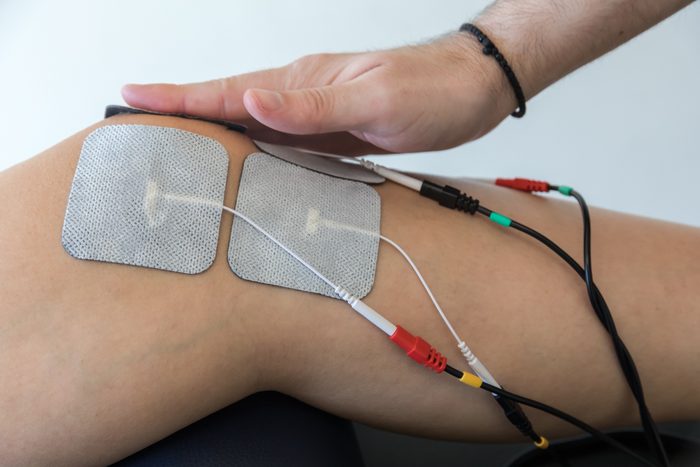
Use a TENS Unit
A TENS, or transcutaneous electrical nerve stimulator, is a device that delivers low voltage electric current to relieve pain. “TENS modulates the way we process the pain sensations,” says Fulop. “Although it’s not a cure to the injury, it can act almost like taking an Advil, blocking pain.”
You can use a TENS every day if you want, too, for up to 30 minutes. “I recommend taking the unit off to give your skin a rest, and prevent irritation so it doesn’t cause a burn in the skin from the electrode being in the same spot for too long.”
The LG MedSupply TENS ($220) can be a worthwhile investment if you often tend to experience knee pain from exercise.
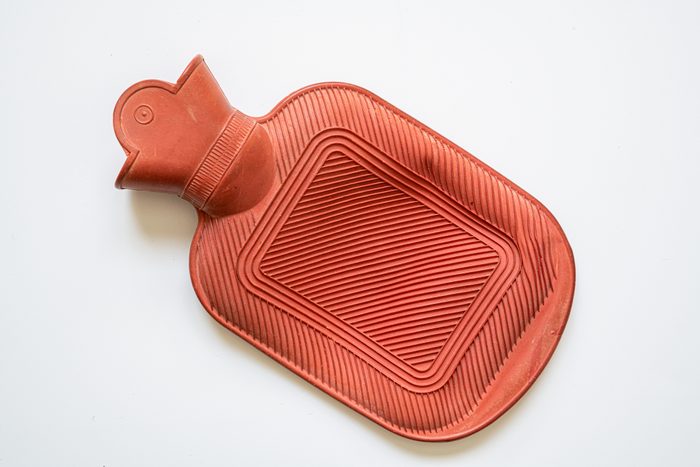
Apply heat to your knee
Turn up the heat. Heat can assist with knee pain as it increases the soft tissue’s metabolism, increasing blood flow to the restricted area, which can speed up recovery time and relieve tension, explains Fulop.
“It’s important to know heat should never be used after an acute injury,” she says. “I recommend waiting 72 hours after an injury before applying heat. After 3 days, using moist heat for 10-15 minutes before stretching or a workout will help warm up the muscles.”
You can use heat daily to relieve any aches and pains and heat can be placed directly on the knee. If you are having knee pain, heat is especially good if used before a workout to increase blood flow and loosen tight muscles, too.
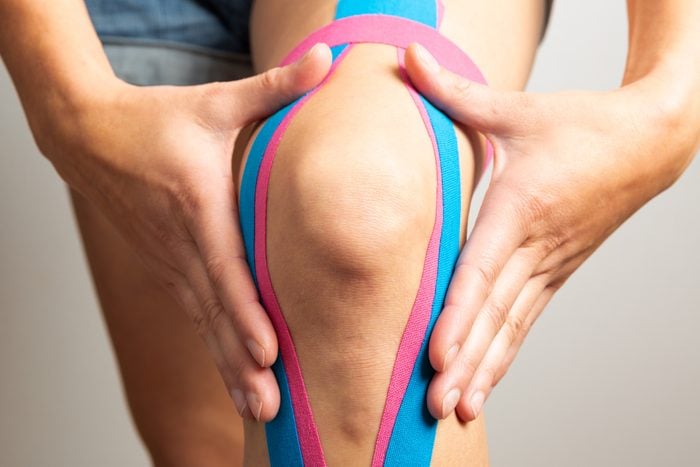
Kinesio tape to increase blood flow
CrossFitters and volleyball players at the Olympics use this tape, which has a purpose.
“The use of Kinesio tape is helpful with injuries,” explains Fulop. “If applied correctly the tape will lift the skin slightly, increasing blood flow to the injured area. Blood flow brings healing nutrients and oxygen to the injured tissue. This is also a great tool to use at home if anyone is experiencing knee pain.”
An affordable option is this KT Tape ($11) that comes in variety of colors, from classic black to neon green, and is hypoallergenic, lightweight, breathable, and comfortable on the skin.
Next, read about the habits that keep cartilage healthy.

